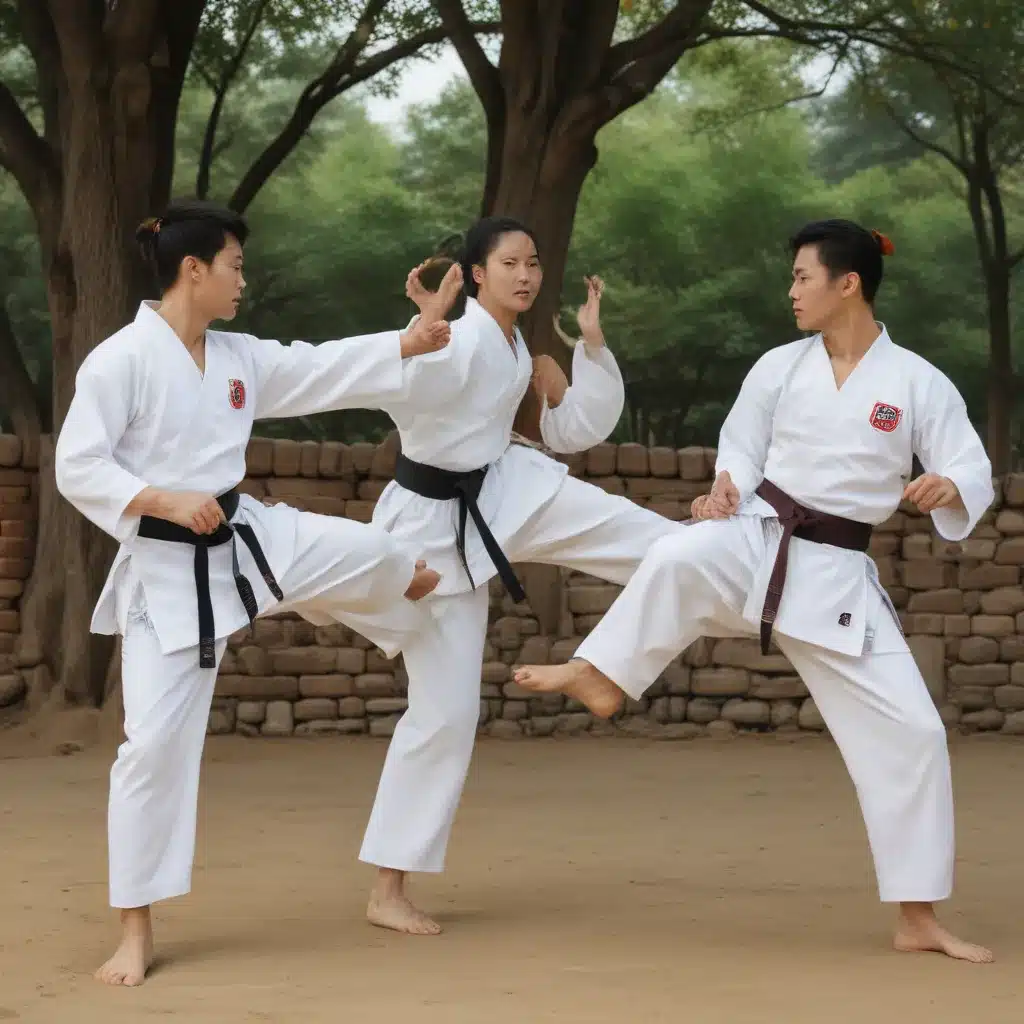
The Mystique of Martial Arts
Ah, the allure of martial arts – where disciplined movements and unbridled power collide in a mesmerizing dance. As I sit here in the heart of Seoul, South Korea, I can’t help but feel a deep sense of wonder and reverence for the ancient martial arts that have shaped this land. From the towering pagodas to the bustling streets, the essence of these timeless traditions permeates every corner, beckoning me to delve deeper into their captivating history.
Uncovering the Origins of Taekwondo
Let’s begin our journey by exploring the roots of Taekwondo, one of Korea’s most renowned martial arts. Tracing its lineage back to the ancient Korean kingdoms of Goguryeo, Baekje, and Silla, Taekwondo’s origins are steeped in a rich tapestry of military traditions and cultural influences. As I wander through the historic streets of Seoul, I can almost feel the echoes of those fierce warriors, their movements once honed for the battlefield, now refined into an art form that captivates the world.
The Evolution of a Martial Art
But Taekwondo’s story doesn’t end there. In the aftermath of World War II and the Korean War, Korean martial arts masters sought to unify the various styles and create a more standardized system. This led to the establishment of the Korea Taekwondo Association in 1959, a pivotal moment that paved the way for Taekwondo’s global recognition. As I stand in the shadow of the Kukkiwon, the World Taekwondo Academy, I can’t help but feel a sense of awe at the dedication and perseverance that have transformed this martial art into an international phenomenon.
The Essence of Taekwondo
Beyond its dynamic kicks and lightning-fast movements, Taekwondo is a testament to the rich cultural heritage of Korea. At its core, Taekwondo emphasizes the values of courtesy, integrity, and perseverance – principles that have long been the hallmarks of Korean society. As I witness the intricate dance of forms and the controlled power of sparring, I can’t help but feel a deep sense of respect and appreciation for the discipline and focus required to master this art.
Taekwondo’s Global Reach
The journey of Taekwondo has been one of remarkable triumph and transformation. From its humble origins as a military training regimen to its ascension as an Olympic sport and a beloved martial art practiced by millions around the world, Taekwondo’s story is one of enduring legacy. As I explore the vibrant streets of Seoul, I can’t help but feel a sense of pride and excitement for the future of this remarkable Korean martial art. Who knows what the next chapter holds for Taekwondo, but one thing is certain: its roots run deep, and its impact on the world will only continue to grow.
Embracing the Spirit of Taekwondo
So, my friends, if you find yourself in the captivating city of Seoul, I urge you to step beyond the bustling streets and immerse yourself in the rich tapestry of Taekwondo. Whether it’s witnessing a breathtaking demonstration at the Kukkiwon or experiencing the serene discipline of a traditional training session, let the essence of this ancient art transport you to a realm where the mind and body converge in perfect harmony. For in Taekwondo, you’ll find not just a physical pursuit, but a way of life – one that celebrates the strength of the human spirit and the enduring legacy of Korea’s timeless martial traditions.
Comparing Karate and Taekwondo
To further explore the nuances between Karate and Taekwondo, let’s take a closer look at their key differences:
| Characteristic | Karate | Taekwondo |
|---|---|---|
| Emphasis | Powerful strikes and close-range combat | High kicks and long-range attacks |
| Techniques | Punches, blocks, and strikes | Dynamic kicks, punches, and blocks |
| Training Methods | Katas, kumite (sparring) | Poomsae (forms), kyorugi (sparring) |
| Philosophical Roots | Japanese and Okinawan influences | Korean cultural heritage and philosophy |
| Founding Figures | Gichin Funakoshi (father of modern Karate) | Various Korean martial arts masters |
While both Karate and Taekwondo share a rich martial arts heritage, their distinct techniques, training methods, and philosophical roots make them unique and captivating in their own right. Embracing the diversity of these ancient arts can truly enrich our understanding and appreciation of the martial arts world.
Conclusion: Embracing the Legacy
As the sun sets over the vibrant city of Seoul, I can’t help but feel a sense of reverence and excitement for the enduring legacy of Taekwondo. This ancient Korean martial art has transcended its origins to become a global phenomenon, captivating the hearts and minds of people worldwide.
Whether you’re a seasoned practitioner or simply fascinated by the mystique of martial arts, I urge you to embark on your own journey of discovery in the city that has nurtured Taekwondo’s roots. Immerse yourself in the rich cultural heritage, witness the breathtaking displays of skill, and let the principles of courtesy, integrity, and perseverance inspire you to push the boundaries of what you thought possible.
For in the end, Taekwondo is not just a physical art – it’s a way of life, a testament to the unwavering spirit of the Korean people. So, let us raise a glass to the timeless traditions that have shaped this remarkable martial art, and may the echoes of its legacy continue to reverberate for generations to come.

